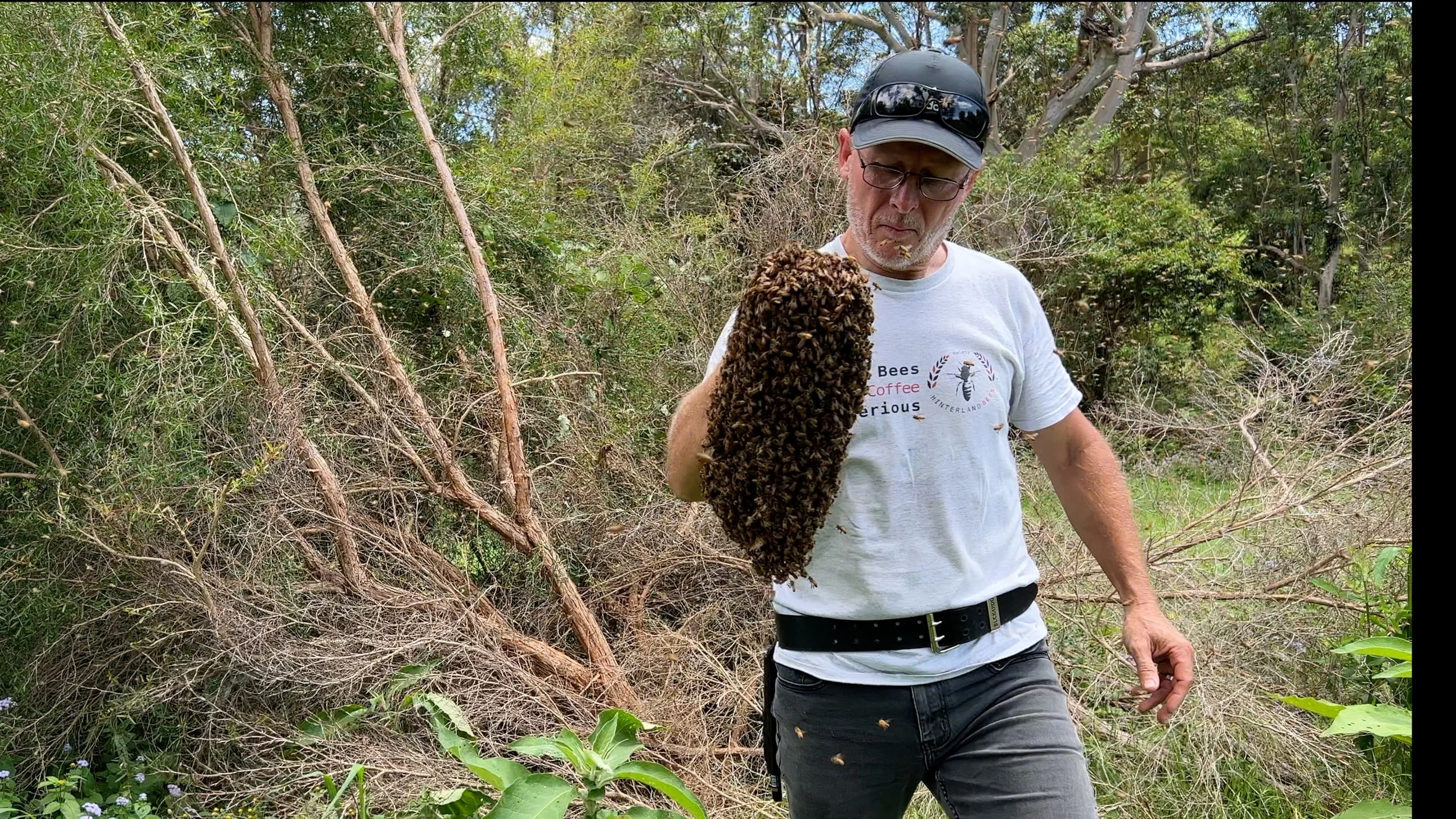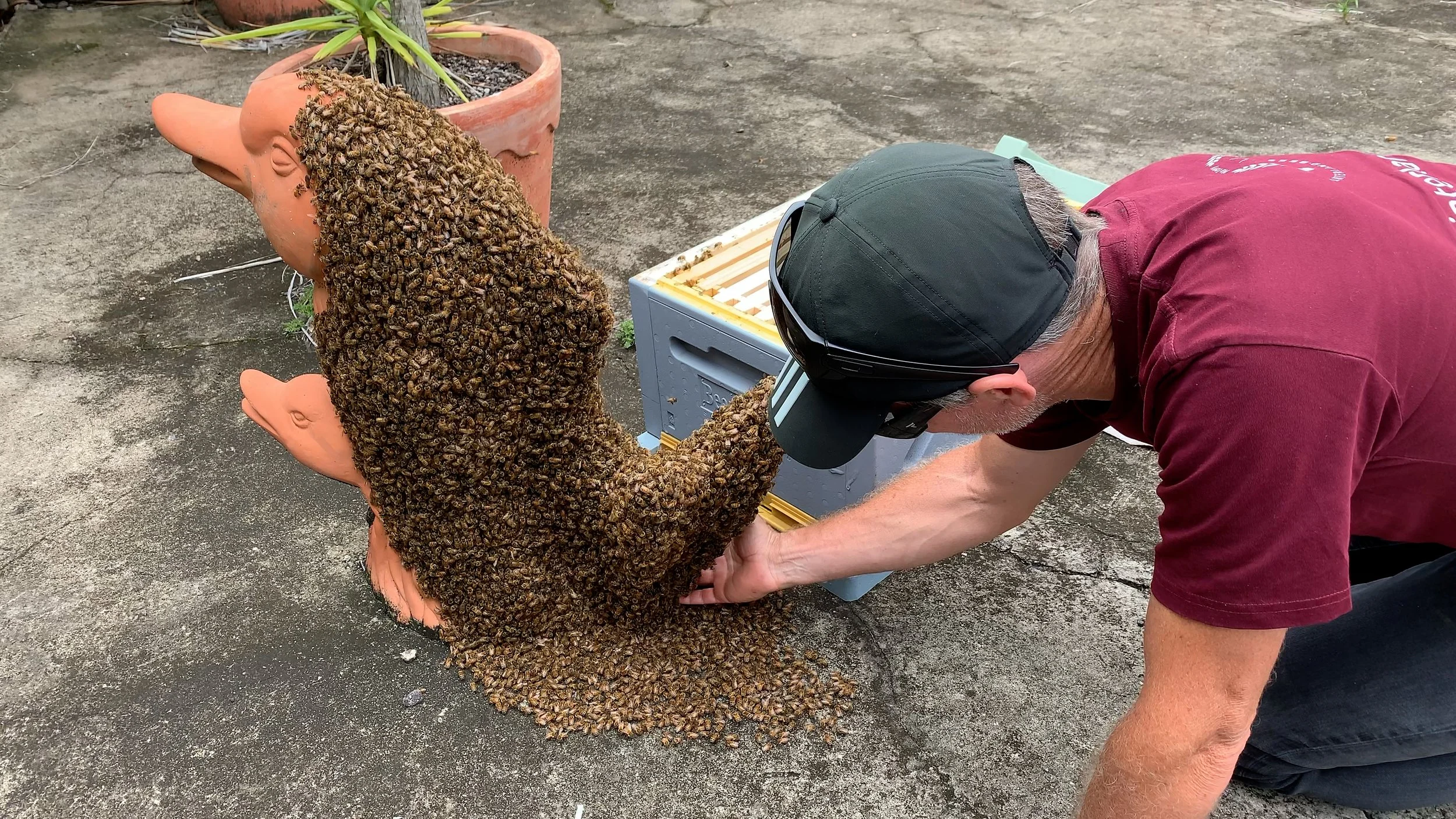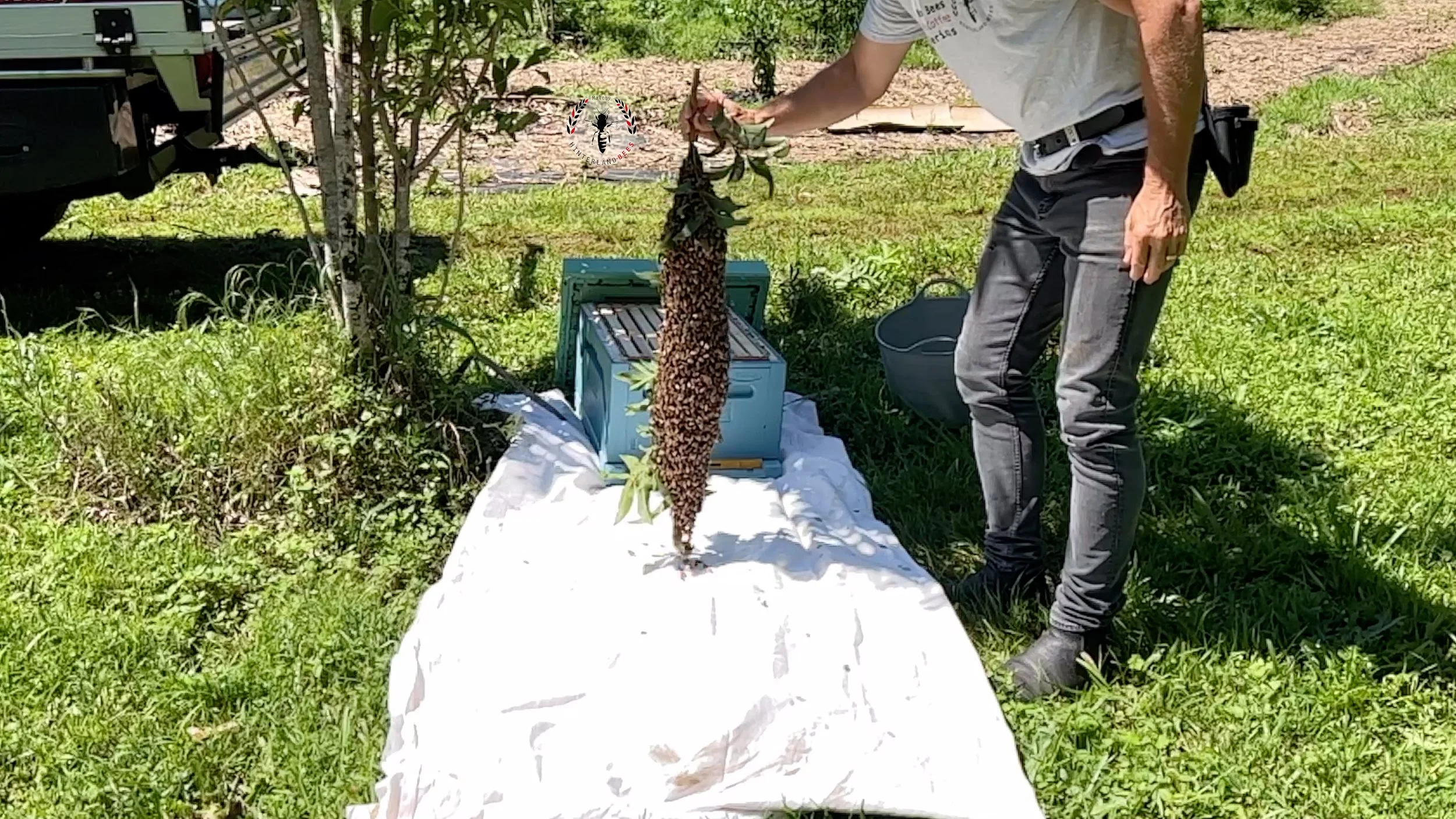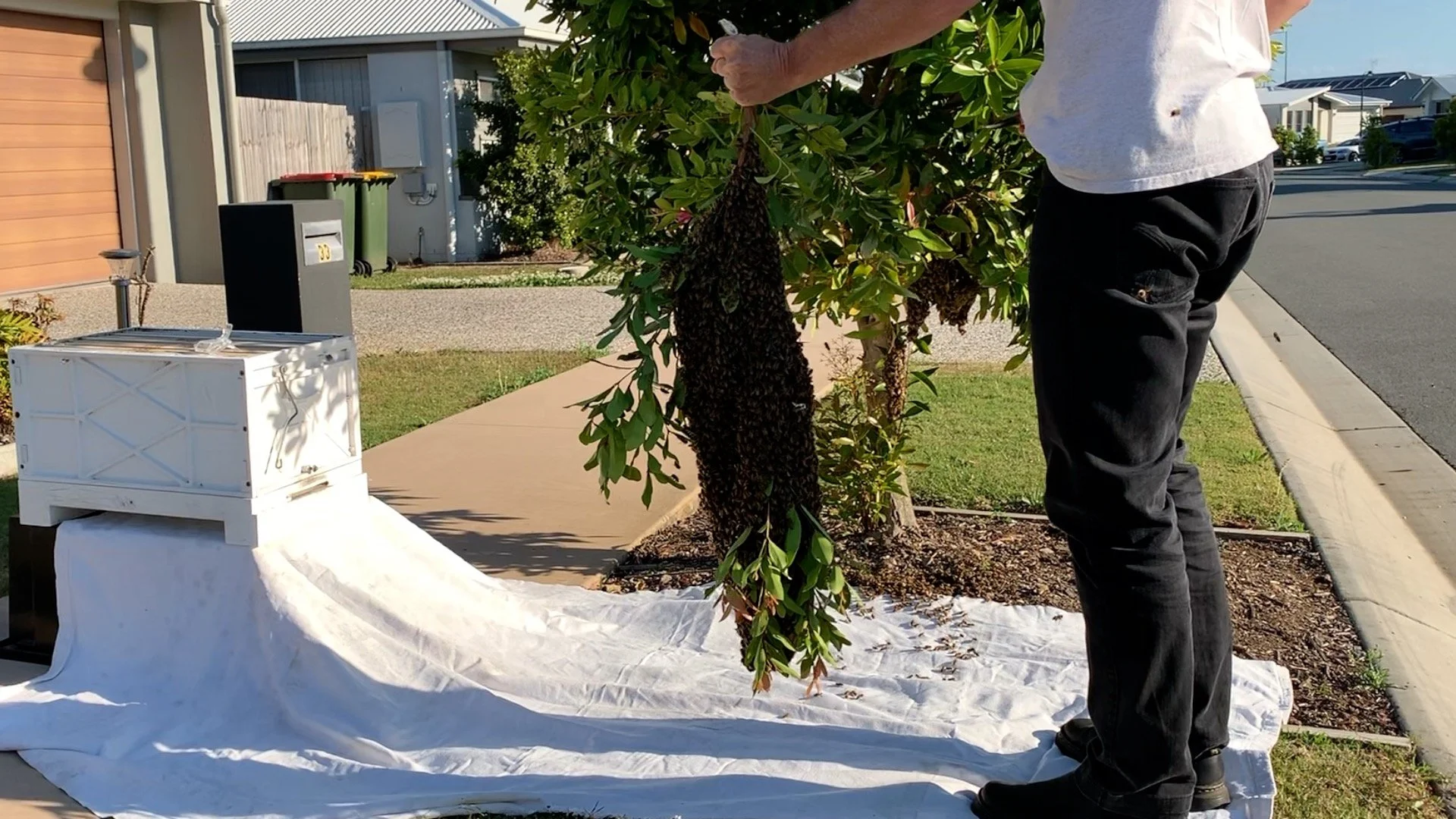Swarm warning: Bee activity heightens in hinterland
Scott Whitaker with a swarm... “homeless bees are effectively homeless, and because bees only defend their home, they pose little threat to people around them.
by Janine Hill
Scott Whittaker on swarming: “Simply put, they create a new queen, and the old queen leaves with up to 70 percent of the population – this could be up to 50,000 bees – to go out into the world and find a new place to build a nest.”
The bee-swarming season has started on the Sunshine Coast, and according to bee expert Scott Whitaker, we can only expect to see it intensify over the coming weeks and months.
“Swarming is how bee colonies reproduce,” said Scott, the co-owner of Hinterland Bees. “Simply put, they create a new queen, and the old queen leaves with up to 70 percent of the population – this could be up to 50,000 bees – to go out into the world and find a new place to build a nest.”
With decent rainfall over winter, we are seeing our flora respond to the warmer spring temperatures and provide the extra nutritional resources for beehives to expand and reproduce.
“While a swarm of bees can be intimidating, they are rarely a threat to people if left alone,” said Scott, who has been keeping bees since 1996. “Swarms are often observed as large clusters of bees hanging off tree branches, fences or building structures. This is a transitional stage for the bees while their scouts seek a new nest site. In this state, bees are effectively homeless, and because bees only defend their home, they pose little threat to people around them.”
So, what is the best course of action?
• 1. Keep your distance and, if necessary, cordon off the area to avoid accidental contact. It might also pay to let your neighbours know, especially if the swarm is close to a property boundary.
• 2. Don’t try to move them on yourself by spraying them with water, insecticide or throwing objects at them. This is a surefire way to aggravate them and get stung.
• 3. Call a beekeeper who can safely relocate the swarm into a new hive box and take your problem away. Expect to pay for the beekeeper’s time on site and their travel time.
“An experienced beekeeper knows that there is no such thing as ‘free bees’,” said Scott.
“An experienced beekeeper knows that there is no such thing as ‘free bees’,” said Scott.
“Swarms do possess some risk of disease and, for the beekeeper, it is pointless to be collecting swarms if they’re not able to spend time preventing their own hives from swarming.”
Should you take any action at all?
Scott said in most cases, bee swarms will eventually move on. “It may take an hour, or they could hang in place for days. Occasionally they don’t move on at all and start building their nest in the open.”
He said it was important to know that these bees are looking for a new place to establish a new nest, and more often than not, that is in the walls and ceilings of our houses. “By taking action to move a swarm cluster, you may be avoiding the far greater cost of removing a nest of bees from the wall of your home.”
Scott Whittaker: “By taking action to move a swarm cluster, you may be avoiding the far greater cost of removing a nest of bees from the wall of your home.”
Currently running over 200 hives for honey production and pollination, Scott specialises in live bee removal. He relocates and rescues over 150 nests and swarms yearly.
As the only full-time professional bee-removal expert operating on the Sunshine Coast, he has extensive experience working for homeowners, property managers, pest controllers and local councils.
See videos of how Scott does it here:
• https://www.instagram.com/reel/ClHigXrPwNa/?igshid=MzRlODBiNWFlZA
• https://www.instagram.com/reel/Ch4MJv0J4i_/?igshid=MzRlODBiNWFlZA
• https://www.instagram.com/reel/CkCXU4OMqZq/?igshid=MzRlODBiNWFlZA




